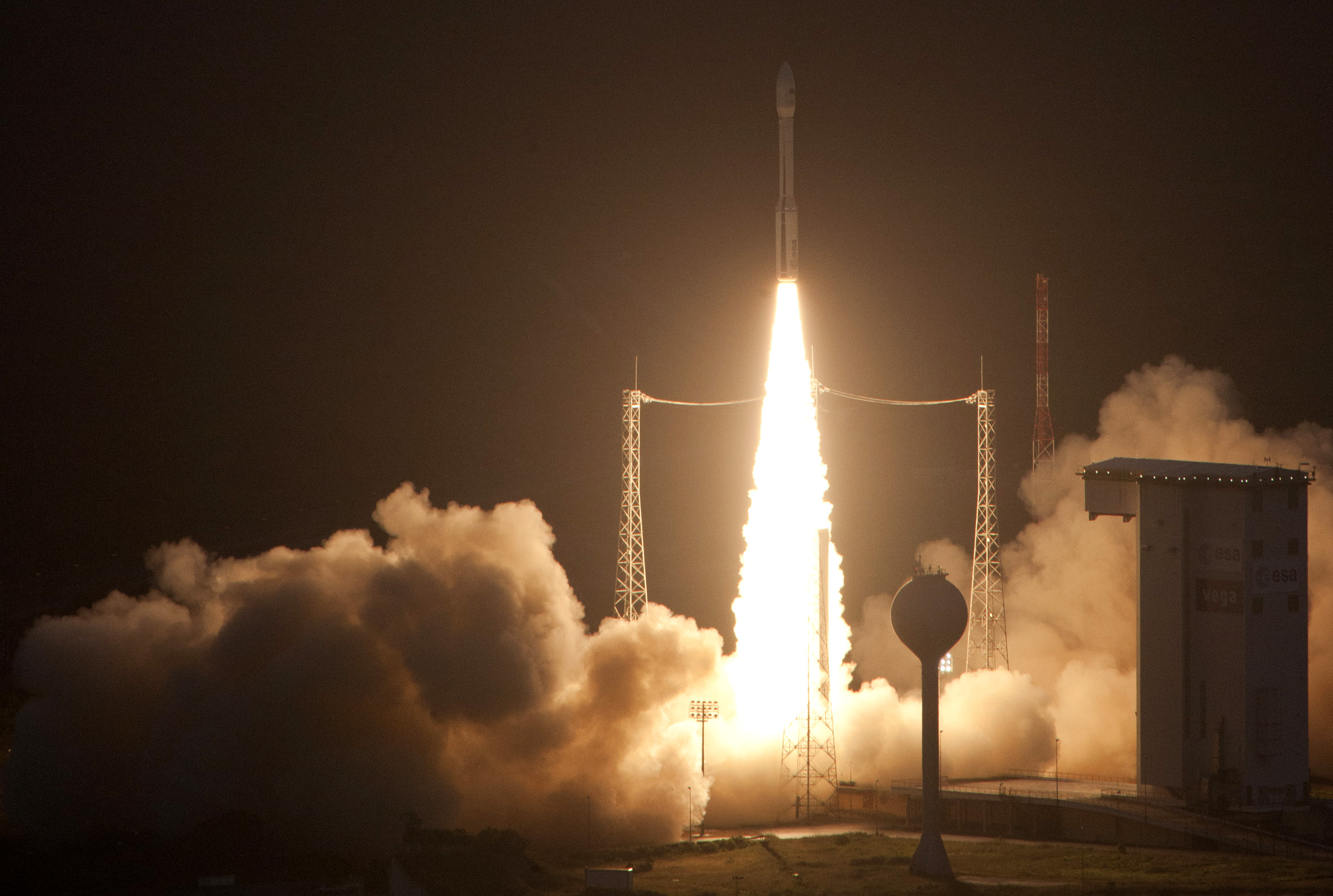Successful debut flight for Europe’s Vega-C rocket

Europe has made a successful debut of its new Vega-C rocket.
The medium-lift vehicle was launched from French Guiana to deliver seven satellites into orbit, the largest of which would test Einstein’s general theory of relativity.
Vega-C is critical to Europe’s continued access to space.
A huge gap in capability needs to be filled as Russian rockets are no longer available due to the war in Ukraine.
Moscow’s withdrawal from the market for Soyuz launchers earlier this year has left European institutional and commercial satellites scrambling for alternative rides.
Vega-C will be the obvious choice for many, although before Wednesday’s successful first flight, the new Italian-led rocket system was fully booked for 2023, 2024 and 2025.
And that’s another reason why Vega-C’s entry into the launcher business is critical. Its first stage, the vehicle segment that lifts it off the ground, will also be used on Europe’s upcoming heavy-lift rocket, the Ariane-6.
Sharing stage technology between both launcher systems is expected to result in significant cost savings.
“The demand for launches in Europe is going to be high in the next few years and beyond, and Vega-C and Ariane-6 are going to be our workhorses,” said European Space Agency Director General Joseph Aschbacher.
“You should see this first flight as the first launch of a new generation of European rockets, the beginning of strengthening Europe’s role in space transport,” Italian space agency president Giorgio Saccoccia told BBC News.
The Vega-C is a revamp of the older Vega vehicle introduced in 2012. Upgrades lead to greater efficiency as well as cost reductions. And its designers hope their changes will also allow for increased flexibility to meet the diverse demands of today’s satellite operators.
Some spacecraft, such as the European Union’s Earth observation Sentinels, can weigh up to two tons. At the other end of the spectrum, there has been an increase in the production of shoebox-sized (and smaller) spacecraft.
Vega-C will therefore have the capability to fly large, single payload missions as well as so-called rideshare missions where several tens of satellites are lifted simultaneously.
Another role for Vega-C is to carry Europe’s mini robotic space shuttle into orbit. A space rider will take over a scientific experiment and return it to Earth. His first outing is likely to happen in 2024.
Both the earlier Vega and Vega-C use upper-stage engines made in Ukraine. The war in the Eastern European nation has made it a hot topic.
There are concerns that the conflict could disrupt supplies of these RD-843 motors, produced by Yuzhmash, Ukraine’s state-owned aerospace manufacturer.
But AVO, the Italian firm responsible for assembling Vega vehicles, says it already has enough for the short term.
In the long term, a Western European alternative is being developed.
Ukraine, as well as wanting to join the European Union, also wants to become a member of the European Space Agency. One of its important contributions is engine technology.
“The process has started. It takes about 10 years to go through all the steps for full membership,” said Dr. Aschbacher explained.
“I have a mandate from the member states of Esa to discuss with Ukraine and identify opportunities for projects or cooperation, although in the current situation this is only happening at a light level.
“But, of course, there is a huge interest on the part of Ukraine to pass all binding steps as soon as possible.”
Wednesday’s launch put seven satellites into orbit, including the LARES-2 (Laser Relativity Satellite-2) payload. Looking like a disco ball, it will be precisely tracked by lasers from the ground.
Researchers at Italy’s National Institute for Nuclear Physics say this will allow them to test for “frame dragging,” a phenomenon predicted by Einstein’s equations that warps local space-time around Earth as it rotates.